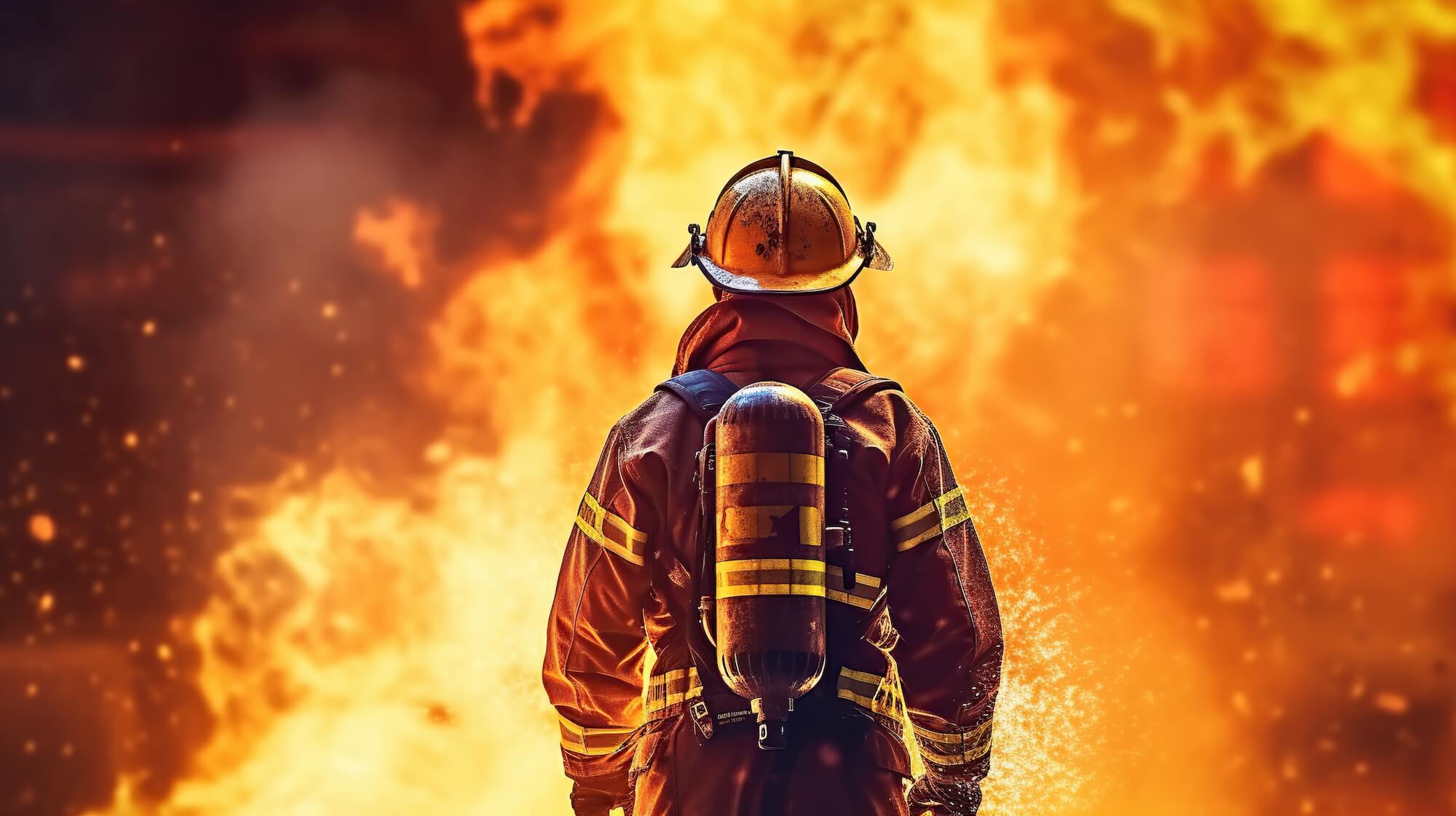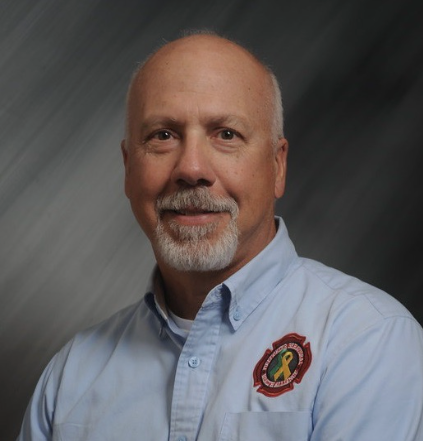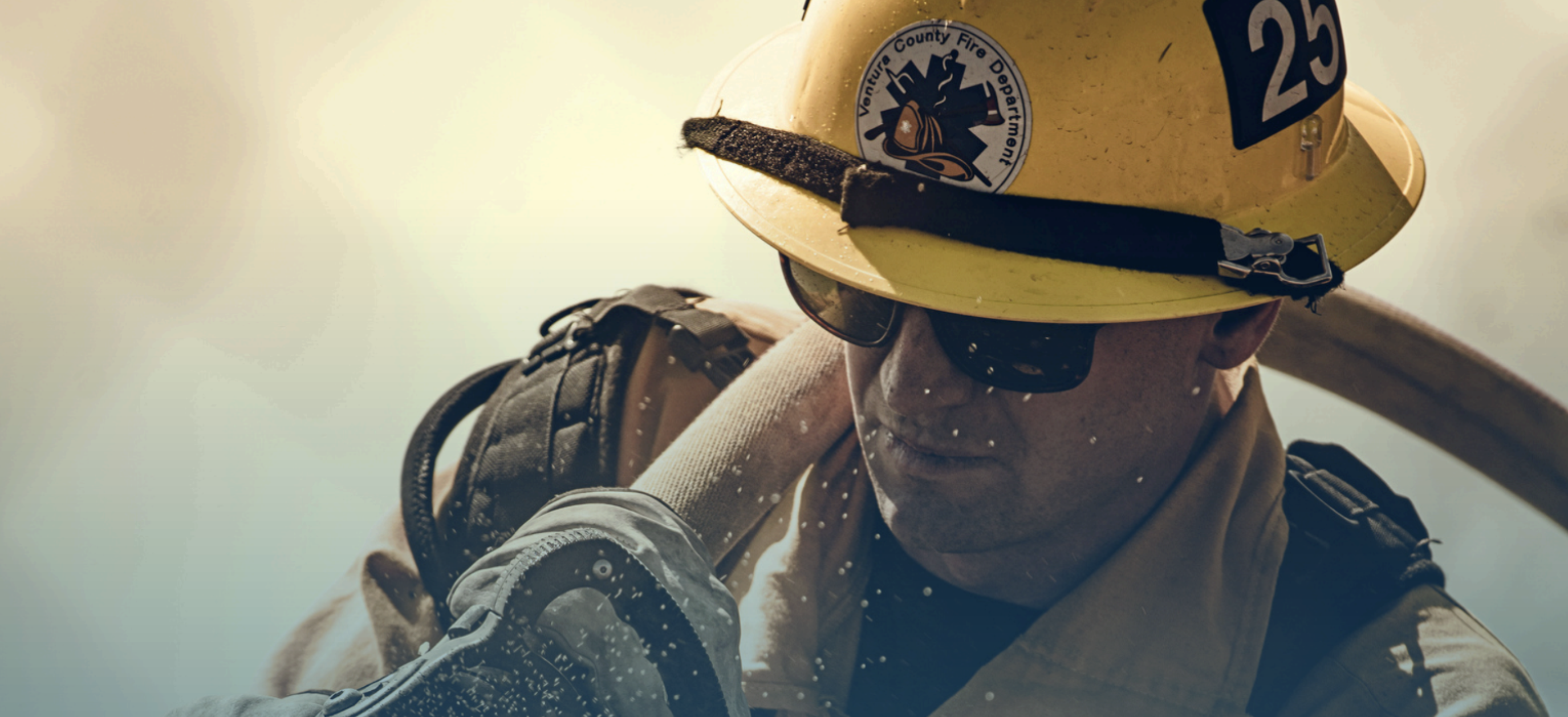
The Hidden Data Behind Fire Department Performance Failures
A tactical briefing with Jeff Dill, Founder of the Firefighter Behavioral Health Alliance and Behavioral Health Administrator at Las Vegas Fire & Rescue
By Gregory Menvielle, CEO of Okaya
Behind the 46% of firefighters who cite their own organization as their biggest stressor lies a data trail most chiefs never see: over 2,260 validated firefighter and EMS suicides since 2010. That's nearly 160 per year - more than line-of-duty deaths in seven consecutive years.
Jeff Dill has been tracking this performance gap for 16 years. As founder of the Firefighter Behavioral Health Alliance and now Behavioral Health Administrator for Las Vegas Fire & Rescue, he's validated every case, trained hundreds of clinicians, and built comprehensive programs that turn this data into operational advantage.
This isn't about mental health awareness. It's about understanding what's degrading your team's performance - and what elite departments are doing differently.

From Hurricane Katrina to Data-Driven Solutions
Menvielle: You went from battalion chief to founding FBHA and becoming a licensed counselor. What triggered that transition?
Dill: I was a battalion chief in the northwest suburbs of Chicago when Hurricane Katrina hit in 2005. We sent firefighters down, and when they came back, they showed me photos - they'd been picking up bodies in the streets and were struggling. They wanted to get help but at that time, clinicians didn't understand our world because we never let them in.
Having started in the fire service in 1990, I wanted to give back. I went back to school, earned my master's, became a licensed counselor, and in 2009 founded Counseling Services for Firefighters to train counselors and chaplains who truly understand us.
A year later, my wife and I created the Firefighter Behavioral Health Alliance to address depression, PTS, relationships, and addictions - and to start tracking firefighter and EMS suicides. We got a lot of pushback; people said, "PTS is a military issue," or "you're making up numbers" because there was such an adverse reaction but we stayed the course.
Sixteen years later, we've validated over 2,260 suicides and estimate we capture about 60% of actual cases. I've traveled more than a million miles speaking across the U.S. and Canada, including at the Pentagon. FBHA has been mentioned in Congress, we host family retreats, and we connect first responders with counselors - all free of charge.
Today, I serve as Behavioral Health Administrator for Las Vegas Fire & Rescue since 2021. It's tough work - I've lost about 35 brothers and sisters to suicide - but we've saved many lives, too.
The Resource Gap: Not Enough Fire-Ready Clinicians
Menvielle: Are there now more counselors who truly understand the fire service?
Dill: The two greatest developments I've seen since 2010 are peer support teams and the number of clinicians who now want to work with first responders. There are a lot more out there now, some who run their own practices and only work with us. But even with that growth, we still need many more.
It's stressful work. I know both sides - I've been in the fire service for 35 years, and I've been a clinician about 17. Job burnout for counselors who work with first responders comes much faster than when working with the general public. It takes a toll. So yes, we've made progress, but we're far from done.
The Measurement Challenge: Proving ROI When Programs Work
Menvielle: How can chiefs measure whether their behavioral health efforts are working?
Dill: That's one of the hardest questions. There are still so many pockets in the U.S. where chiefs think, "We haven't had a suicide, so we're fine" and by the time I talk to them, it's often too late.
We're proactive on everything else - hose line advancement, search and rescue, fireground techniques - but not behavioral health.
And the reality is, when budget cuts come, behavioral health is usually the first thing to go. "We need our rescues, we need our hoses - we'll cut that next year". That's dangerous thinking. You can have the best equipment in the world, but if your people aren't ready to operate it - mentally, emotionally - it doesn't matter.
The FBHA doesn't get a lot of funding and I've even had manufacturers tell me: "There's not much ROI in behavioral health." I tell them: "You're saving lives when you invest in people. These are the same chiefs you're trying to sell engines and gear to - and they're the ones taking their lives".
Money is always tight, but that can't be the excuse.
The #1 Performance Degradation Factor: Relationships
Menvielle: You've mentioned moral injury before, how does that differ from PTSD, and why is it so important?
Dill: Our data show that the number one reason firefighters take their lives is relationships - by far. PTSD is trauma-based and fear-based, but moral injury hits your emotions. It's about rejection, betrayal, guilt, anger, jealousy - things that cut to the core of who we are as people. We're human beings first, firefighters second.
In 2010, I coined the phrase "cultural brainwashing". We put the uniform on, and we're expected to act a certain way. Show no weakness. Always be in control.
No one's an expert in this field. I've been doing it for 16 years, and I'm still learning. An expert solves a problem and moves on. We have a big problem and have had this problem since the beginning of time: we're dealing with people, and that's always complex.
Some of the older firefighters are now asking for help and encouraging the younger ones to do the same. That's a big shift.
But younger firefighters face their own challenges. Many lack interpersonal or social skills because they grew up on screens and phones. Communication - especially about how you feel - doesn't come naturally.
I always tell people to do an internal size-up every day. Ask yourself two questions: Why am I acting this way? Why am I feeling this way? Listen to your body - if you're losing sleep, getting angry, or turning to substances, it's trying to tell you something. And listen to others; they often see what you don't.
What Elite Departments Do: The 12-Point Program
Menvielle: What does a complete behavioral health program look like in a fire department?
Dill: Every department should have one, and it's more than an EAP or peer support. It should include annual training, guidelines, policies, and retirement support. When firefighters retire, many struggle because they lose identity and structure so we track them too.
For us it is a 12-point behavioral health program and I've instituted it here in Las Vegas - from prevention to post-care. It includes a QR code linking to all our resources: peer support, clinicians, inpatient and outpatient care, even a book library. Firefighters can access it privately from home.
We have about 40 clinicians in our directory they can call directly, 75 peer support team members - from battalion chiefs to new firefighters - and 15 or 16 chaplains. Recently, we added four firefighter wives to the peer support team so spouses can reach out to someone who understands.
Firefighters can also seek help confidentially. We can line up someone for inpatient treatment without the chiefs or others knowing - ensuring people can take FMLA or vacation time. Privacy is key.
When I came in 2021, our department's surrounding departments like Clark County and Henderson, North Las Vegas weren't working together. Now we work closely with them - and even the Creech Air Force Base. Everyone supports each other.
Our peer support team also helps in the community - for example, if a manufacturer loses an employee in an accident, we offer our services. The coroner's office too. It's about helping wherever we can. Our people just want to do good.
AI and the Future: Detection Without Action is Liability
Menvielle: How do you see AI fitting into firefighter mental health?
Dill: I like AI, and we're already testing it. We're using a system that sends peer support scenarios to a small group of us for training. It's useful.
AI absolutely has a place, especially for training. Peer support members can't just sit around waiting for a call - they need to keep their skills sharp, and AI can help with that.
The question is, what happens after detection? If AI detects that I'm exhausted or stressed - what's next? Is the department liable if they know and don't act? What if someone refuses help because they fear losing their job?
That's where the challenges are. For police officers, the fear is real: if AI says they're struggling, they might lose their weapon or position.
So, departments have to go step by step. Be transparent. Decide what AI tracks, what it recommends, and what actions follow.
The challenge is real, but the value is there. The AI isn't biased; it picks up on aspects of personality, facial expressions, tone, and behavior to help - but it doesn't judge. It's just trying to help. Bridging that gap between the AI's insight and human decision-making is going to be the difficult part.
I'm interested to see where it goes.
The Data Behind the Numbers
Jeff leaves us with a final message that every chief needs to hear:
"Whenever someone uses our data, I tell them - these aren't numbers. They're faces, names, and families left behind. It's easy to get lost in the statistics, but every number represents a life."
"We've only been talking about behavioral health in the fire service since around 2010. The fire service has existed since Ben Franklin. We've come a long way - but we still have a long way to go."
Firefighter performance isn't just about skills and equipment - it's about operational readiness at every level. Through 16 years of data collection and program development, Jeff Dill has shown that departments who treat behavioral health as a performance optimization system - not a crisis response - keep their best people in the fight.
As AI and data-driven tools become available, the question isn't whether technology can detect problems. It's whether departments are ready to act on what the data reveals - before performance gaps become permanent losses.
Okaya's approach mirrors what Jeff describes: quick, confidential check-ins that turn invisible performance degradation into manageable data. Not surveillance. Not therapy. Just operational discipline to catch problems before they become crises. Like daily rig checks, but for the operators themselves.
Learn more about the Firefighter Behavioral Health Alliance and their comprehensive workshops for departments, clinicians, and families.
Do you want to try it for yourself?
Setup your free Okaya Account today to experience it for yourself. Then contact us to have access to the organization's view of the platform.
.png)



